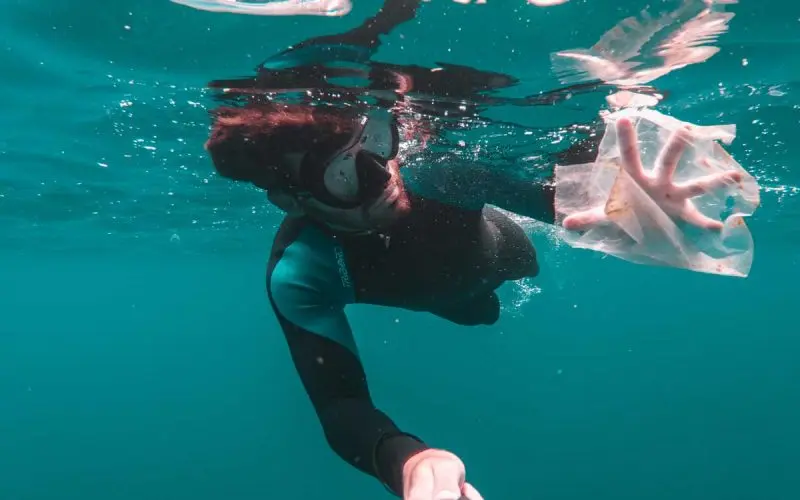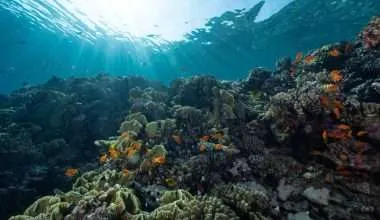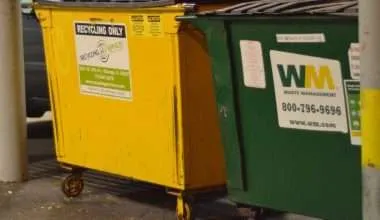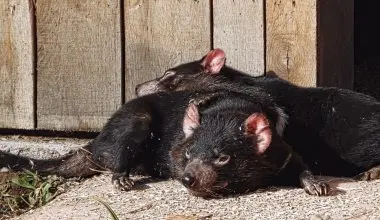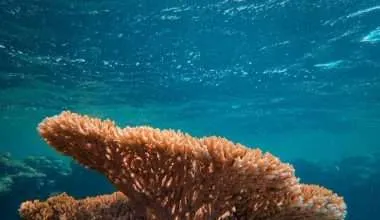Table of Contents Show
Plastic bags surround us everywhere, can you remember the last time you went shopping and didn’t use a plastic bag? Most of us can’t.
Single use plastic bags are very convenient for consumers. But this convenience comes with a huge burden on the environment and human health. (convenience is a single advantage against a huge number of cons).
Plastic bag usage amounts to 10 million plastic bags every minute. Imagine how many until you end reading up this post!
A handful of nations have taken up the responsibility of reducing plastic bag pollution.
One of those is china that has banned the use of plastic bags entirely. Other nations like Bangladesh and India have banned plastic bags that are less than 50 microns thick.
There are also numerous private organizations just like ours striving to be plastic free, some grocery shops charge you to discourage buying non-recyclable plastic grocery bags.
Navigation:
- Pollution
- Made from Non-renewable resources
- Energy-Intensive
- Harmful to Wildlife
- Harmful to Human Health
- Expensive
- Hard To Clean
- Tough to Recycle
- Non-biodegradable
- External Costs of Manufacturing Plastic Bags
- Last longer than Humans!
- Recycled plastic bags don’t help much
- Oceans are deeply affected
- Plastic Bag Ban is Extremely Effective
- Reduce Aesthetic value of your neighborhood
- Bans raise awareness
- Promotes Research
- Save Money
- Easy To Apply
- Factories can make Reusable Bags
- Already in action
- Supported By UN
- Helps the Government
How to get rid of old plastic bags?
Reasons why plastic bags should be banned everywhere
1. Pollution
Plastic bags result in multiple forms of pollution, especially Land and Water.
We see them around us quite often. Even if we clean our backyard every day, at least one plastic bag is bound to wind up on the fence, on the trees, or in the litter.
The reason plastic material ends up in your backyard (even though you didn’t throw it in there) is because plastic items are lightweight. They can easily be lifted up by air and travel long distances before dropping on another piece of land. They can even make it to several of world’s oceans.
Plastic trash is the most common constituent of garbage collected from homes and offices. Ironically; trash bags are also, at times, made of plastic.
Thin-film Plastic bags are smallest in terms of garbage but their huge quantity can cause major problems around the world.
For example; During monsoon rainfall In Bangladesh, huge quantities of plastic items make their way into storm drains and block the sewerage pipes. This is the reason for water-logging streets.
You can ‘literally’ walk right over the Pasig River in Philippines just because it’s filled up with so much plastic waste.
2. Made from Non-renewable resources
Manufacturing plastic bags utilizes non-renewable sources; this contributes to global warming and climate change.
Many of us fail to realize that when we pick up those plastic bags for grocery shopping, we are basically promoting their production.
The problem is that manufacturing plastics bags requires energy which comes from non-renewable resources.
The raw materials of plastics (polypropylene) include petroleum and natural gas.
These non-renewable sources contribute highly to global warming and climate change along with release of harmful greenhouse gasses.
P.S: Worldwide plastic bottle production uses 24 Million liters of oil to produce billions of water bottles.
3. Require a lot of energy to make
The energy used to drive your car for a kilometer is equal to the amount of energy needed to make just 9 plastic bags.
Even paper bags are quite energy-intensive. Manufacturing a paper bag uses 4 times more energy than plastic carryout bags.
For starters, paper requires trees to be cut down. Manufacturing paper bags also uses a greater amount of toxic chemicals and is heavier.
The process adds up to be carbon negative due to cutting down (photosynthesizing) trees and heavier transportation releases more greenhouse gases.
On average, we use plastic carryout bags for 12 minutes and it exists in the universe for millions of years (polluting the environment).
Given that, the justification for using single use plastic bags is thrown out the window! (I mean that metaphorically, Do Not Litter!)
4. Extremely Harmful to Wildlife
Plastic bags are extremely harmful to wildlife, especially marine animals.
Many organisms of the food web including birds, terrestrial animals like snails and especially the marine life organisms such as fishes and turtles mistake plastic material as food and ingest them.
What happens is that the plastic bags or other plastics get stuck in the small digestive systems of these animals.
This causes obstruction of the digestive systems and because they get blocked, these animals either die of suffocation or starvation.
Turtles feed on jellyfish primarily and because plastic bags resemble jellyfish to the sea turtles, mostly leatherback species which are endangered, they ingest these plastic bags.
Plastic waste is also one of the major blockages for baby turtles making their way across the beach into oceans.
Just watch this video by National Geographic to just try to be in animals shoes for a minute and comprehend what it feels like to be suffocated by plastic, helpless.
Plastic waste being hazardous is not recent news, it has been going on for decades and the awareness is only catching up as of now. Nearly 2 decades ago, we discovered a pelican that died with almost 20 plastic bags in its stomach.
Most recently in 2019, a dead whale washed up on the shore in Philippines with 88 pounds of plastic waste in its stomach.
5. Harmful to Human Health
Plastic bags are quite harmful to human health as well. Micro-plastics have been found in human feces. But it doesn’t come as a surprise because most of what we drink or eat does have plastic residues in them.
Research estimates that every second person in the world could have a bit of micro-plastic in their bodies. The worrisome part is what would happen if plastic concentrations were to get too high in human bodies.
This is because it has not been tested before. As we discussed, they have turned out to be deadly for animals.
Iron absorption could be affected by ingesting plastics. Micro-plastics act as Iron chelators and impact the absorption of iron in the small intestines.
Chelators are very small particles that block absorption of food and water into small and large intestines.
Raw plastic is subjected to numerous chemicals before it reaches the hands of consumers, most commonly the inorganic dyes to color the plastic products.
These dyes are often contain trace quantities of heavy metals like lead which could result in disastrous effects on the body, especially the kidneys that try to filter them out.
The fragments of plastic bags that end up in the ocean absorb numerous chemicals, the more dangerous ones being PCBs (Polychlorinated Biphenyls) and PAH (Polycyclic Aromatic Hydrocarbons).
These chemicals, if ingested, have been reported to cause issues in normal hormone functions of the human body.
6. Quite Expensive
Plastic shopping bags are very expensive.
When you’re thinking of one plastic bag, that’s just a few cents. However, when talking thousands of plastic carrier bags a grocery store has to give out everyday. It translates to quite an expense.
Well, what feels like free, isn’t. When plastic bags are given away by shopkeepers to carry groceries to your home, they aren’t actually free.
For starters, retail establishments have to bear this expense of about 5 cents per bag and they incorporate it into the grocery prices (Indirectly coming back to cost us).
7. Hard to Clean from the Environment
After using that grocery, we dispose of these plastic bags into garbage. Someone has to clean it up. The removal of these plastic bags on the streets requires money, which is once again paid by taxpayers.
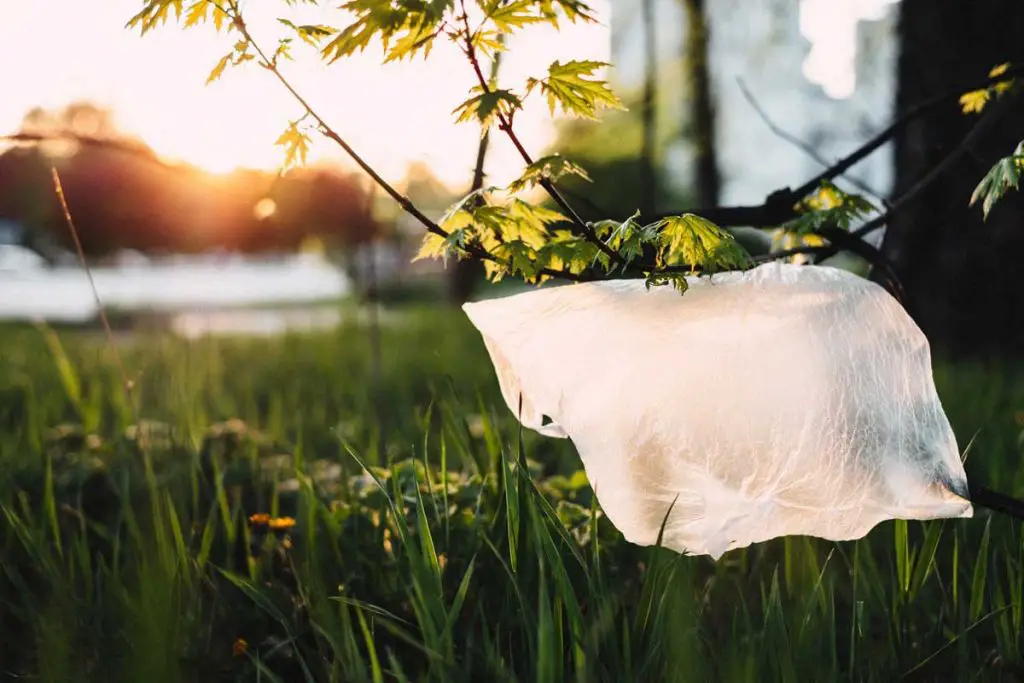
A few estimates suggest that plastic bag cleanup costs the government 20 cents per bag.
This means that taxpayers end up paying 88 dollars each year on cleaning up plastic bag waste.
It’s an unnecessary cost!
Additionally, plastic bag litter is very hard to sort out from garbage. This is one of the major challenges by recycling industries.
8. Tough to Recycle
Plastic bags are certainly not easy to recycle. The machines used to recycle waste gets plastic stuck in it which is even more difficult to remove.
Most of the recycling facilities don’t have the capacity to recycle plastic bags and therefore don’t accept them.
To recycle these plastic bags, they need to be clean and considering that we use them for our groceries and they are mixed up with garbage, separating and then cleaning them would be almost impossible.
This may be the reason that the annual rate of recycling of plastics is just around 5-10%. 🙁
9. Non-Biodegradable
Plastic bags made out of petroleum are completely non-degradable.
Instead of degrading, these plastic bags stay long enough to be broken down into tiny pieces which make their way into the waterways and eventually the oceans where they affect marine life.
Approximately 50,000 to 1 Million of these tiny plastic fragments are floating around in every square mile of the world’s oceans.
However, there are other types of Plastic bags that can be recycled.
10. External costs of Plastic Bag Manufacturing
As I discussed there are costs associated with plastic bags being bought by shop-keepers and obviously there are costs associated with the production of plastic bags as well.
But, what we fail to realize are the immeasurable costs to the environment.
The manufacturing plants have been known to be quite devastating to the environment. The environmental effects of plastic production are not taken into consideration by many researchers due to them being qualitative variables which are difficult to measure.
The first time the environmental impact of plastic production was taken into consideration in 2014 by United Nations Environment Programme. They found out the external costs to be as high as 75 Million.
11. Last longer than Humans!
Plastic bags take so long to degrade that we can never confidently say that they have been effectively ‘removed from the environment’.
Above all those, the companies keep on producing more and more plastics and introducing them into the environment. This leads to higher saturation of plastics and higher levels of plastic pollution.
Banning production/use of plastic bags may help reduce plastic pollution.
12. Recycled plastic bags are of little help
Using recycled bags just means that the bags will be used twice or thrice, but eventually they are also thrown back into the environment.
They will then end up in the landfills or the oceans, polluting the environment again. This is because these plastic bags although recycled, are non-biodegradable.
This means they will potentially exist for many years before they degrade.
13. Oceans are Deeply Affected
Most of the plastic bags we throw away, find their way into world’s oceans one way or another.
A glaring example would be The Great Pacific garbage patch (also known as pacific trash vortex) in the North Pacific Ocean.
Most of the plastic that we throw away in the oceans ends up here, causing this patch to grow more and more.
14. Bans are Extremely Effective
Bans are an effective way of reducing plastic waste. A law goes a long way in reducing any form of overuse. This is why U.S considering ban on plastic bags is crucial.
Another major country, China, introduced a ban on the use of plastic bags and around 5 years later the amount of plastic bags thrown into the environment reduced by 45 Billion.
This form of ban could lead to a reduction in landfill across the country, going a long way to protect the nature and serenity of the area.
15. Reduce Aesthetic value of your neighborhood
Plastic bags being the major component of the trash thrown away, most of it ends up on the streets.
This happens specifically in the third world countries like India and also in the low-income neighborhoods of developed countries.
This is because in these areas the people don’t care about where they throw the trash, they’ll throw it anywhere but the bin. When the streets of these areas are filled with plastic bags, this damages the aesthetic value of the area.
16. Increases Awareness
When plastic bags are banned, this leads to a cleaner environment for people to see and also sends a global message to all the populations of how important it is to ban plastic bags to save the environment.
This is because the ban makes them curious why other nations are banning plastic bags.
With research continuing on the effects of plastic pollution, many more people have become aware of how important it is to implement similar bans across the world.
17. May help Find better alternatives
A ban on plastic bags may cause increased investments into finding other better alternatives.
This means there will be development in the technology sector as more manpower is derived into finding an alternative.
18. Saves Money
The cost of disposable bags should take into account all factors ranging from production using petroleum to being transported to landfills.
Just the production of a single use bag is around 5 cents and we make up to 1 Trillion of those. Do the Math!
It’s definitely north of a few billion dollars!
Imagine what happens when you start adding other costs like transport. Read about those on #10 above.
Even individually, you can save quite a bit of money when you reduce and reuse.
For example; when taking out trash, you don’t need a garbage bag. Simply using your trash can should do the trick, unless you live in Kansas City. Solid waste management companies there require that you put your trash in garbage bags.
A ban could potentially eliminate all of these costs and even reduce environmental impact.
19. Easy to implement among Educated
Most of the educated population understands the adverse effects of plastic bags and the importance of enforcing a ban.
This means that they are mentally ready and would not resist enforcement of the ban.
Even among the less-fortunate, bans are an effective way to reduce plastic bag use quickly. Raising awareness should be a side-strategy, but not the primary one as that may take longer than any of us could see the difference.
This is especially true in developing countries where majority of the population is illiterate.
When bans do occur, most of the population will automatically look to find why their nation is banning plastic bags.
20. Factories can make Reusable bags
This will lead to bags that are sustainable. This may lead to opening up of job opportunities as new factories are opened up and there is higher demand of research and manufacturing of green products.
A reusable bag has a lifetime of 4 years, which saves use of 600 plastic bags!
Even factories that used to make plastic bags previously can now be repurposed to make alternatives.
21. Already in Action
Many nations have already started implementing the ban. As many as 40 nations have already put the ban into action have had positive responses.
This should be evident enough for the rest of the nations to follow and implement the ban.
22. UNEP Secretariat supports the ban
This suggests that obviously there is a greater good associated with this ban on plastic bags.
There are some governments that cannot implement this ban effectively; these governments can then introduce hefty fines on people throwing away plastic bags.
23. Allows governments to focus on other environmental challenges
Banning plastic bags can allow governments to focus on other environmental challenges and make way for better governance.
So much effort and money is used up in cleaning up of plastic bags that this amount can be utilized in other ways of saving the environment if this ban is effectively implemented.
Before you head of, watch this video of UN on effect of plastics on the oceans:
Most recently, Bangladesh has recognized the effects of not banning plastic bags effectively and hence, the courts in Bangladesh have ordered the government to enforce the ban on single-use plastics following Monday (6/Jan/2020).
Enforcing this ban on single-use plastics was quite necessary in Bangladesh since 87000 tonnes of it is thrown into trash every year.
How can you help implement plastic bag bans?
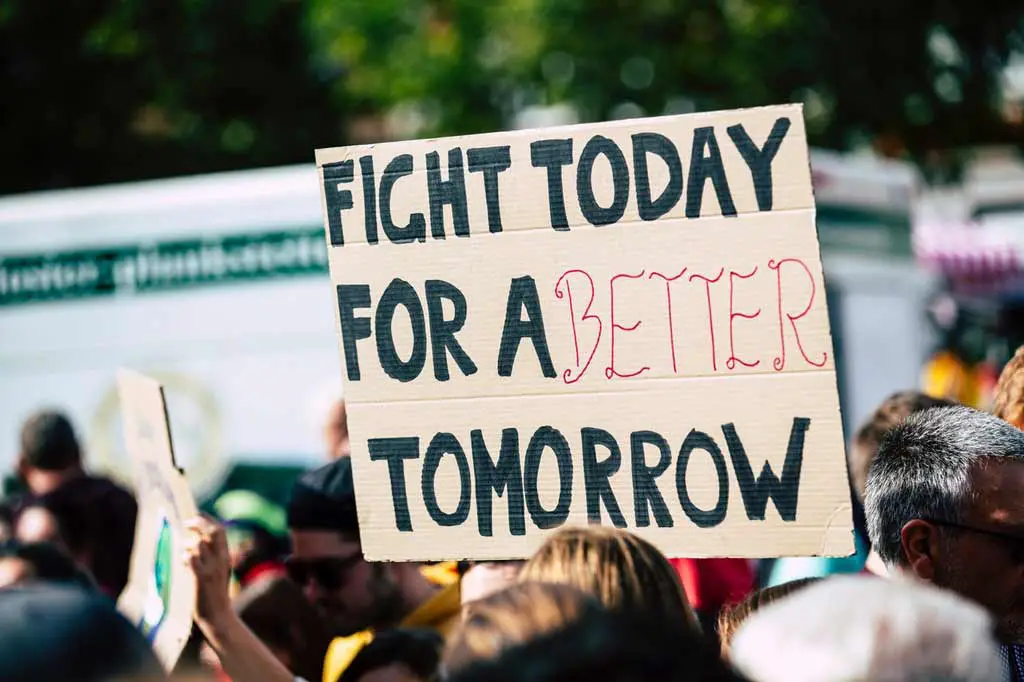
Now that you know a bit about why it’s necessary to ban plastic bags; you might have asked yourself question, What do I do to ban plastic bags in my area?
The first step to any action is proper education. Learn the effects of plastic pollution on the environment and human health firmly. These effects will help you win arguments against perpetrators who promote plastics bags.
At the same time, you should also accept the other side of the argument. Learn why plastic bag bans are difficult to implement in your area.
Ask around, why do people in your area use plastic bags?
Most of the times you’ll face arguments of convenience and an inability to change (that’s human nature). However, at other times you’ll learn it’s to do with cost and unavailability of alternatives.
In some areas, due to limited production, alternatives to plastic bags are either not available or very expensive to buy. In such cases, you need to find and suggest some eco-friendly alternatives like reusable cloth bags.
Keep in mind, the alternative needs to be cheap, accessible and eco-friendly.
Here are some examples of eco-friendly plastic bags you can consider.
You’ll face fierce competitions from business tycoons and lobbyists. This is why you need to campaign and raise awareness first.
When you’ll be aware of effects of plastic bag pollution and able to suggest alternatives, you’ll convince others to join you in no time!
P.S: Raising awareness about effects of plastic pollution will reduce use of all kinds of single-use products like plastic straws, bottles, paper towels, disposable towels and tissues.
Every big step starts with a series of small steps.
You can ask and convince others around you to avoid using plastic bags or bring a reusable shopping bag with them. This will spread around and ultimately reduce overall plastic bag usage in your area.
Eventually, fewer bags will make their way into landfills.
Retail establishments will automatically start finding alternatives to keep their customers happy. Some may even avoid plastic packaging to attract more green customers. That’s a major win!
Additionally, changes like these don’t go unnoticed by municipal authorities. When they find that this is what people want and that it’s good for environmental health; they’ll also start campaigning for your cause in no time.
Such social and political pressures can ultimately result in bans, or at the very least, tax exemptions on single-use plastic bag alternatives.
What to do with existing plastic bags?
Conventional plastics bags (which most of us have stashed in our homes) are toughest to recycle. Even modern recycling facilities found in the city do not accept petroleum-based plastic bags.
Larger retail stores like Walmart have industry-grade recycling facilities. They can take care of conventional plastic bags and other plastic products for you.
Just make sure your plastic bags are clean and dry so they don’t contaminate an entire batch in the industry. This will result in greater damage than doing better for the environment.
Read the following article to know what types of plastic bags can be recycled.
